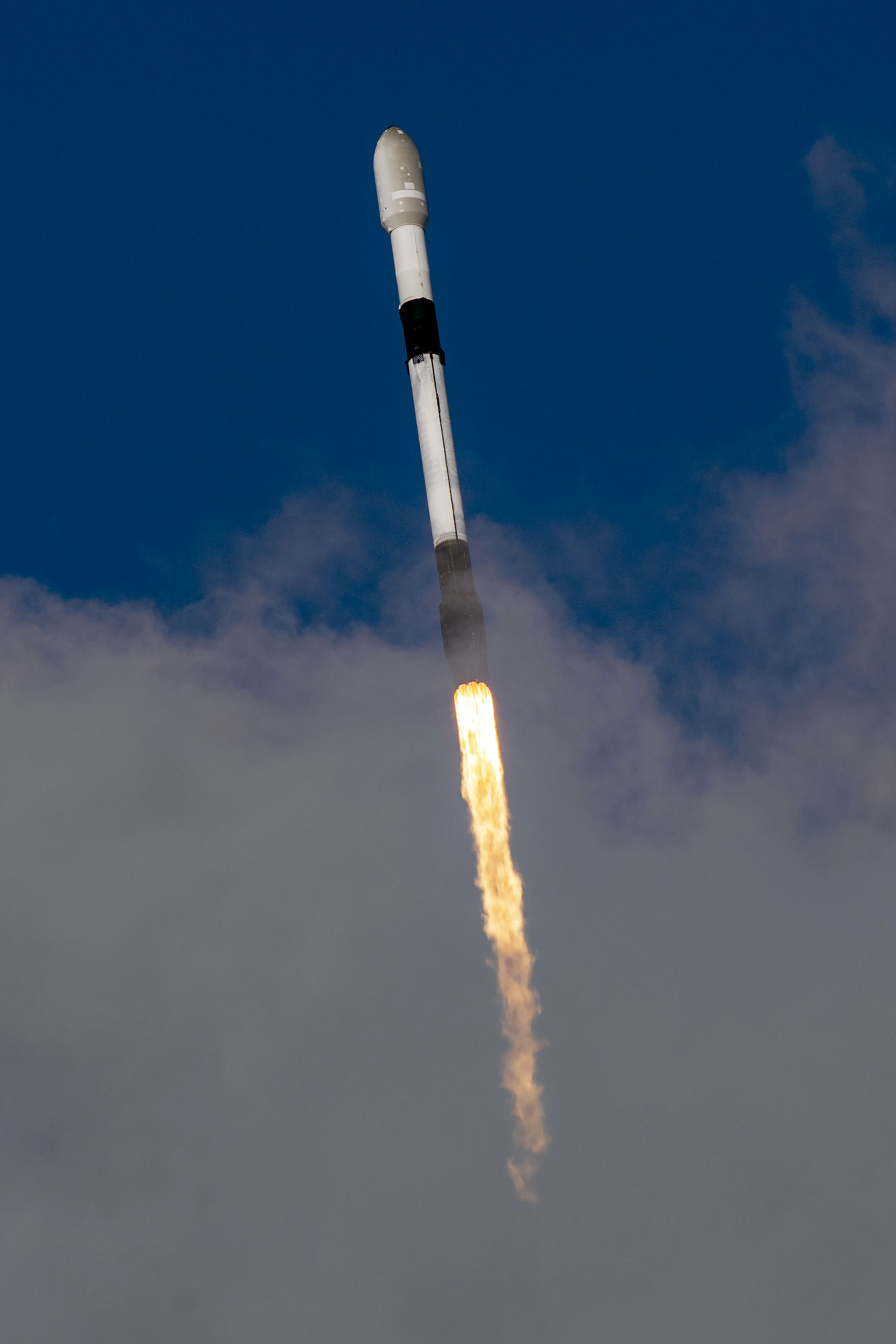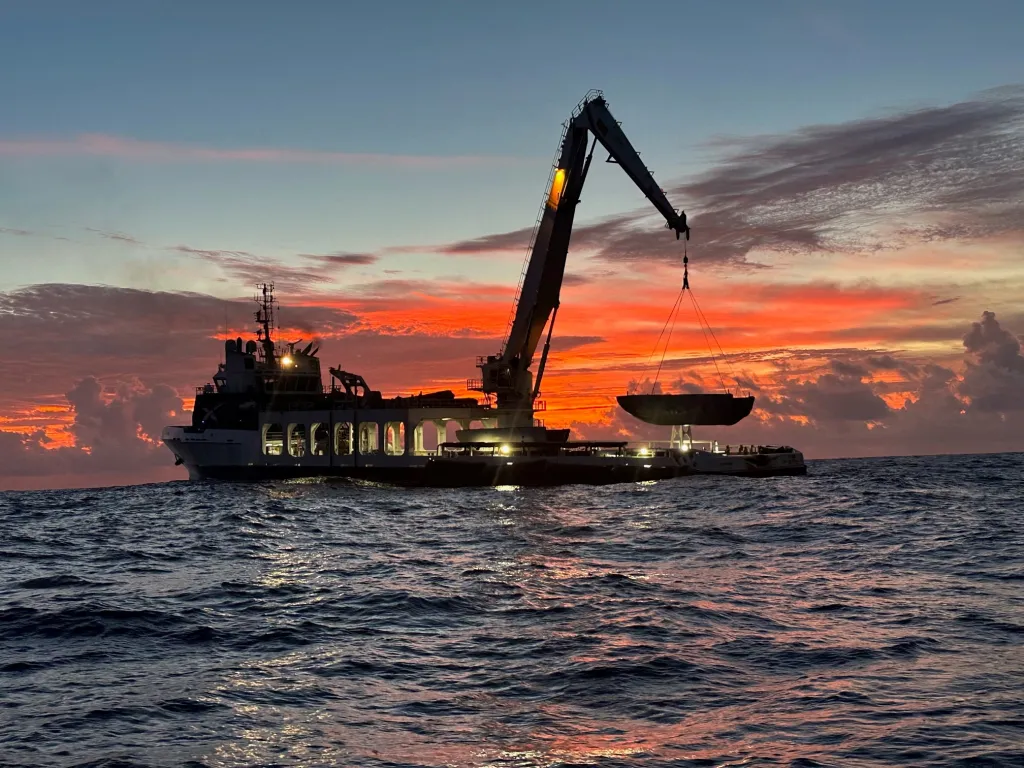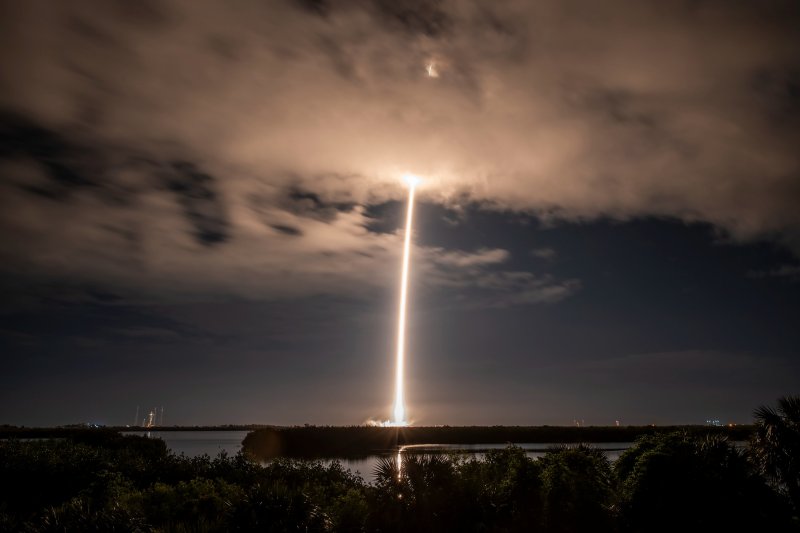Featured image credit: SpaceX
Lift Off Time |
March 30, 2024 – 21:52 UTC March 30, 2024 – 17:52 EDT |
|---|---|
Mission Name |
Eutelsat 36D |
Launch Provider
|
SpaceX |
Customer
|
Eutelsat |
Rocket |
B1076-12; 30.27-day turnaround |
Launch Location |
Launch Complex 39A, (LC-39A), Kennedy Space Center, Florida, USA |
Payload mass |
5,000 kg (11,000 lb) |
Where are the satellites going? |
Geostationary Transfer Orbit (GTO); GEO-1,640 |
Where will the first stage land? |
The booster will land on Just Read the Instructions
Tug: Crosby Courage; Support: Bob |
Will they be attempting to recover the fairings? |
The fairing halves will be recovered from the water by Bob |
Are these fairings new? |
The fairings are likely flight-proven |
How’s the weather looking? |
The weather is currently >95% go for launch |
This will be the: |
– 316th Falcon 9 mission – 245th Falcon 9 flight with a flight-proven booster – 259th reflight of a booster – 28th reflight of a booster in 2024 – 289th booster landing – 215th consecutive landing (a record) – 31st launch for SpaceX in 2024 – 79th SpaceX launch from LC-39A – 60th orbital launch attempt of 2024 |
Where to watch |
Official Livestream |
What’s This All Mean?
SpaceX is set to launch the Eutelsat 36D mission to a geostationary transfer orbit from Launch Complex 39A (LC-39A), at the Cape Canaveral Space Force Station, in Florida. This satellite will be placed at the 36-degree East slot, providing TV broadcasting services to Africa, Russia, and Europe.
How Did It Go?
This launch was fully successful; the booster successfully landed and the payload was deployed into the correct orbit.
What Is Falcon 9 Block 5?
The Falcon 9 Block 5 is SpaceX’s partially reusable two-stage medium-lift launch vehicle. The vehicle consists of a reusable first stage, an expendable second stage, and, when in payload configuration, a pair of reusable fairing halves.
First Stage
The Falcon 9 first stage contains nine Merlin 1D+ sea-level engines. Each engine uses an open gas generator cycle and runs on RP-1 and liquid oxygen (LOx). Each engine produces 845 kN of thrust at sea level, with a specific impulse (ISP) of 285 seconds, and 934 kN in a vacuum with an ISP of 313 seconds. Due to the powerful nature of the engine, and the large amount of them, the Falcon 9 first stage is able to lose an engine right off the pad, or up to two later in the flight, and be able to successfully place the payload into orbit.
The Merlin engines are ignited by triethylaluminum and triethylborane (TEA-TEB), which instantly burst into flames when mixed in the presence of oxygen. During static fire and launch the TEA-TEB is provided by the ground service equipment. However, as the Falcon 9 first stage is able to propulsively land, three of the Merlin engines (E1, E5, and E9) contain TEA-TEB canisters to relight for the boost back, reentry, and landing burns.
Second Stage
The Falcon 9 second stage is the only expendable part of the Falcon 9. It contains a singular MVacD engine that produces 992 kN of thrust and an ISP of 348 seconds. The second stage is capable of doing several burns, allowing the Falcon 9 to put payloads in several different orbits.
SpaceX is currently flying two different versions of the MVacD engine’s nozzle. The standard nozzle design is used on high-performance missions. The other nozzle is a significantly shorter version of the standard, decreasing both performance and material usage; with this nozzle, the MVacD engine produces 10% less thrust in space. This nozzle is only used on lower-performance missions, as it decreases the amount of material needed by 75%. This means that SpaceX can launch over three times as many missions with the same amount of Niobium as with the longer design.
For missions with many burns and/or long coasts between burns, the second stage is able to be equipped with a mission extension package. When the second stage has this package it has a grey strip, which helps keep the RP-1 warm, an increased number of composite-overwrapped pressure vessels (COPVs) for pressurization control, and additional TEA-TEB.

Falcon 9 Fairings
The Falcon 9’s fairing consists of two dissimilar reusable halves. The first half (the half that faces away from the transport erector) is called the active half, and houses the pneumatics for the separation system. The other fairing half is called the passive half. As the name implies, this half plays a purely passive role in the fairing separation process, as it relies on the pneumatics from the active half.
Both fairing halves are equipped with cold gas thrusters and a parafoil which are used to softly touch down the fairing half in the ocean. SpaceX used to attempt to catch the fairing halves, however, at the end of 2020 this program was canceled due to safety risks and a low success rate. On this mission, SpaceX will attempt to recover the fairing halves from the water with its recovery vessel Bob.
In 2021, SpaceX started flying a new version of the Falcon 9 fairing. The new “upgraded” version has vents only at the top of each fairing half, by the gap between the halves, whereas the old version had vents placed spread equidistantly around the base of the fairing. Moving the vents decreases the chance of water getting into the fairing, making the chance of a successful scoop significantly higher.

Eutelsat 36D Countdown
All times are approximate
| HR/MIN/SEC | EVENT |
|---|---|
| 00:38:00 | SpaceX Launch Director verifies go for propellant load |
| 00:35:00 | RP-1 (rocket-grade kerosene) loading underway |
| 00:35:00 | 1st stage LOX (liquid oxygen) loading underway |
| 00:16:00 | 2nd stage LOX loading underway |
| 00:07:00 | Falcon 9 begins engine chill prior to launch |
| 00:01:00 | Command flight computer to begin final prelaunch checks |
| 00:01:00 | Propellant tank pressurization to flight pressure begins |
| 00:00:45 | SpaceX Launch Director verifies go for launch |
| 00:00:03 | Engine controller commands engine ignition sequence to start |
| 00:00:00 | Falcon 9 liftoff |
Eutelsat 36D Launch, Landing, And Deployment
All times are approximate
| HR/MIN/SEC | EVENT |
|---|---|
| 00:01:14 | Max Q (Moment of peak mechanical stress on the rocket) |
| 00:02:30 | 1st stage main engine cutoff (MECO) |
| 00:02:34 | 1st and 2nd stages separate |
| 00:02:42 | 2nd stage engine starts (SES-1) |
| 00:03:26 | Fairing deployment |
| 00:06:18 | 1st stage entry burn begins |
| 00:06:43 | 1st stage entry burn ends |
| 00:08:07 | 2nd stage engine cutoff (SECO-1) |
| 00:08:12 | 1st stage landing burn begins |
| 00:08:36 | 1st stage landing |
| 00:26:45 | 2nd stage engine starts (SES-2) |
| 00:27:46 | 2nd stage engine cutoff (SECO-2) |
| 00:33:57 | EUTELSAT 36D deploys |




